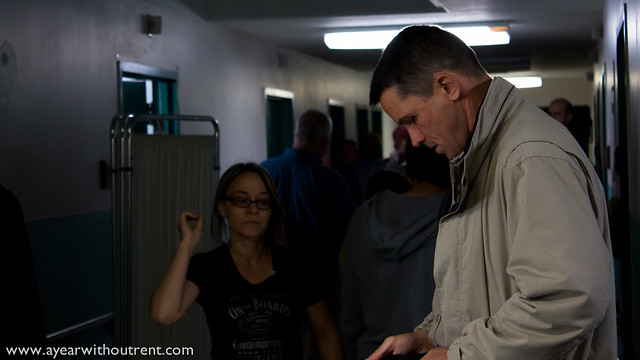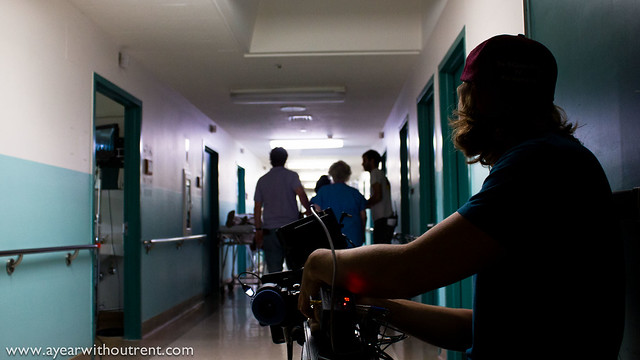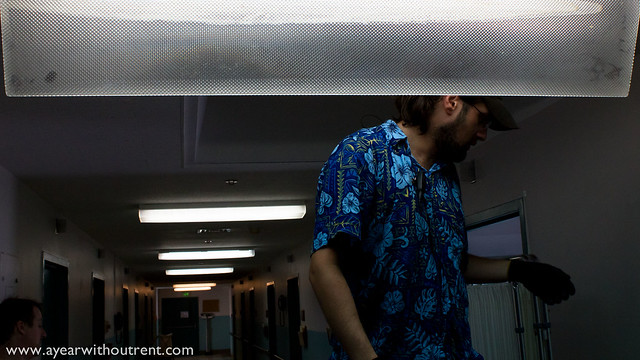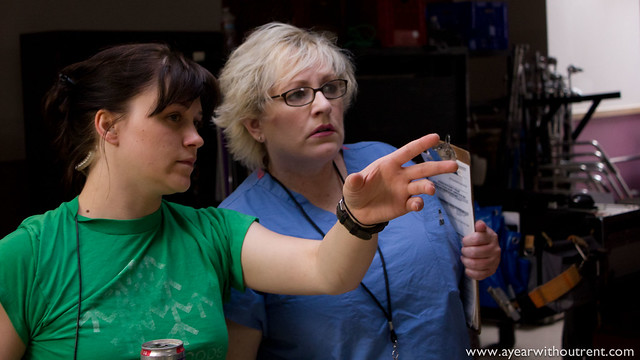
There’s something strange about life on location.
When you shoot a film, you never shoot it in order. The chief reason being that it’s never easy to load in and out of a location and location moves themselves are time consuming and costly, so you want to shoot all of the scenes that require a specific location all at once. Makes sense, right?
So what ends up happening when you’ve got a location that’s in the film a lot is that you spend a lot of time there. And after a couple of days, a sense of belonging starts to settle in. The location becomes the production’s home, for lack of a better word. You get used to the place. You get to know the neighborhood (and the neighbors. And you even unpack, sort of.
And this happens really quickly. Like in a day.
But then, eventually you have to move on to another location, and it just isn’t the same. The rhythm is all different. Everything is in the wrong place. You can’t find the bathroom. And where the f**k did craft services go?
Sometimes you can’t even find the new location. Or, at least the road that leads to it. (Yes, I got lost.)
But I found it. Today we’re filming in a abandoned wing of a hospital. I find hospitals weird enough by themselves, but an abandoned one? Creepy. There’s all sorts of stuff in the rooms that’s at the same time fascinating and off-putting.
We’re shooting a couple of scenes using the hallways. A hallway, by definition, doesn’t have a whole lot of room to set up lights. You can change out the halogen bulbs in the overhead light and you’ve got a little bit of room in doorways and whatnot, but there’s not a ton you can do.
But logistically, the big challenge comes in coordinating extras. Sure, you don’t necessarily need extras, but an empty hallway means something completely different from one with doctors and nurses wandering around, doing their thing. And that wandering takes coordination. That falls to Allison Eckert, our AD.
It basically works like this: Allison is standing behind the camera (and video village) on the walkie. There’s extras in a couple of the rooms, and some of those rooms have PAs in them who are also on walkies. Down at the very end of the hall, there’s a little alcove where we’ve hidden a light and more PAs. Also, me.
On action, Allison directs the PAs to cue the extras. One extra will have instructions to walk from room 5 to room 8. Another will walk down the hall half-way and pause to look at the chart outside a patient’s room. Allison will whisper “go Lucas” into the walkie. I point to the extras and they do their thing. You get the idea.
On the scale of things we’ve done while I’ve been on this film, it’s really pretty simple. There’s a bunch of extras, which is always a little tricky, and it’s a location move to a new place, but other than that, there’s nothing crazy going on.
But, then again, I’m not there for the whole day. Tomorrow I fly from Seattle to Newcastle upon Tyne, over ye olde Atlantic Ocean and today’s shoot goes pretty late. Not to mention I’ve got to get my car to Phil Seneker’s house a half hour outside of the city and I don’t want to be that guy who shows up at 2am. In reality, I wasn’t even supposed to be on set today, but when I realized I could work in half a day, it was an easy decision. More content is better than less, right?
I make the rounds and say my goodbyes. Jacob Wysocki jokingly asks if we’ll ever see each other again. The way the indie film community works these days, it’s a pretty safe bet.
Filmmaker Lucas McNelly is spending a year on the road, volunteering on indie film projects around the country, documenting the process and the exploring the idea of a mobile creative professional. You can see more from A Year Without Rent at the webpage. His feature-length debut is now available to rent on VOD. Follow him on Twitter: @lmcnelly.




